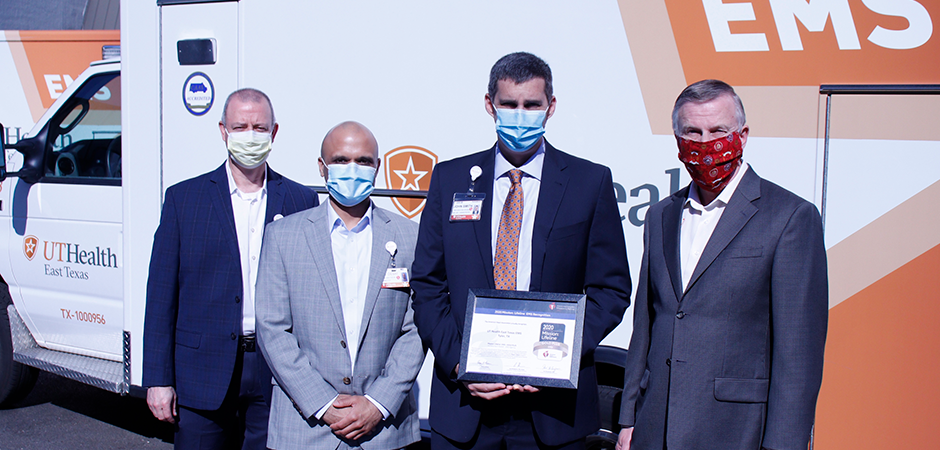Tyler, Texas (June 30, 2020) -UT Health East Texas EMS has received the American Heart Association’s Mission: Lifeline® EMS Gold Plus Award for implementing quality improvement measures for the treatment of patients who experience severe heart attacks.
Every year, more than 250,000 people experience an ST-segment elevation myocardial infarction (STEMI), which can be caused by a blockage of blood flow to the heart and requires timely treatment. To prevent death, it’s critical to restore blood flow as quickly as possible, either by mechanically opening the blocked vessel or by providing clot-busting medication.
Mission: Lifeline EMS recognition is a program designed to showcase Emergency Medical Service organizations across the nation for excellent STEMI care. Prehospital personnel are the first providers of care to patients suffering from cardiac emergencies. The role of EMS in the system-of-care for these patients is crucial and often sets the course for the patient’s outcome. The Mission: Lifeline EMS recognition program was launched in 2014 and continues to celebrate the achievement of the pre-hospital providers and their collaboration with each other and destination hospitals specific to STEMI patient care.
“This award demonstrates that UT Health East Texas EMS provides the best care possible to patients with heart disease and it underscores our dedication to providing optimal care for heart attack patients,” said John Smith, CEO of UT Health East Texas EMS. “We are pleased to have earned this recognition the last five years for our dedication to bringing life-saving techniques to our medics and the first responder organizations across East Texas.”
Greg LaMay, UT Health East Texas EMS clinical director, said the impact of having these guidelines in place is far-reaching. Sometimes first responder organizations such as local fire departments arrive at the scene at the same time or before EMS to start initial treatment, including obtaining vital signs and getting pertinent patient information, he said.
“Because the first responder organizations know our standard of care, they can save precious minutes by following the guidelines in the treatment of people who have severe heart attacks,” LaMay said. “This is a great example of how we work together with first responder organizations in our community to ensure the highest level of quality care is delivered to East Texas.”
About UT Health East Texas
UT Health East Texas provides care to thousands of patients each year through an extensive regional network that includes 10 hospitals, more than 50 clinics, the Olympic Plaza Tower, 13 regional rehabilitation facilities, two freestanding emergency centers, regional home health services covering 41 counties, an EMS fleet of more than 50 ambulances and four helicopters, and a comprehensive seven-trauma center care network, including the region’s only Level 1 trauma facility.
As a partner with The University of Texas System, UT Health East Texas is uniquely positioned to provide patients with access to leading-edge research and clinical therapies while training and educating the next generation of physicians and other health professionals. The nationally recognized UT System also includes UT MD Anderson Cancer Center in Houston, UT Southwestern Medical Center in Dallas, as well as three other major university medical centers located throughout the state.

